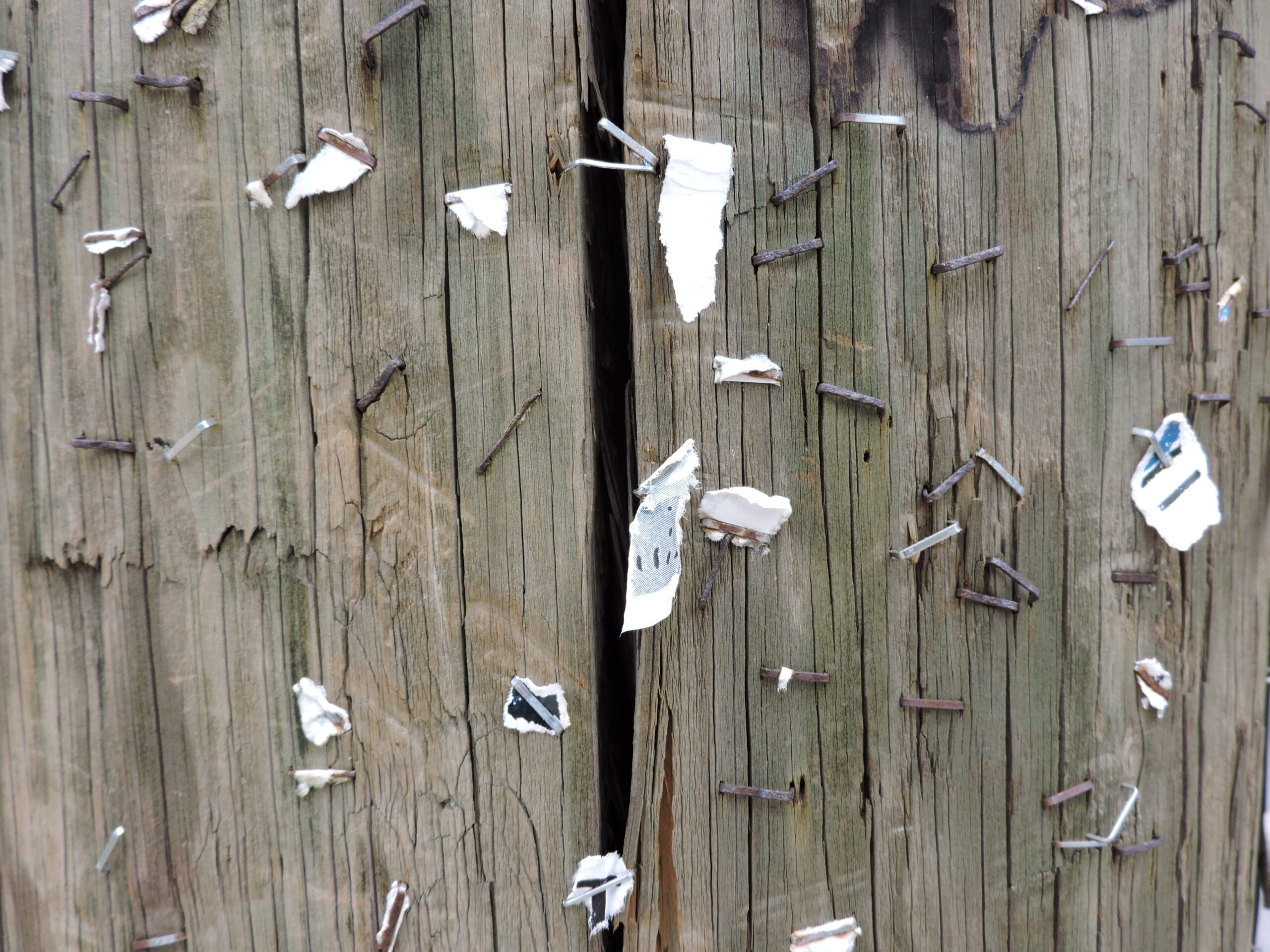
The ubiquitous site for announcing yard sales and pleading for the return of lost cats, the utility pole is a monument to right-of-way messaging. Up close, we can see the detritus of rhetorics long past: rusted nails and staples, and worn out duct tape barely hanging on. Beyond its main purpose to deliver basic needs to neighborhoods — electricity, phone and cable service, a rest stop for birds — the utility pole stands as a palimpsest of a place to hang our words. It represents the ways we communicate with each other in vernacular, pedestrian approaches: the local convenience store window; the laundromat bulletin board; the cardboard box, weighed down with bricks, at the intersection of My Street and Main. They are mundane objects we use to desperately find that lost cat, or sell that car, or get side jobs. The utility pole, then, implicitly reflects a sense of community, of common purpose, of shared place. A palimpsest whose ruin documents a narrative about neighbors’ desires, needs, desperations. On this splintered wooden post, they become ghosts of discourse.


2 thoughts on “PostRhetoric: (A) Discourse on Splintered Wood and Rusted Nails”